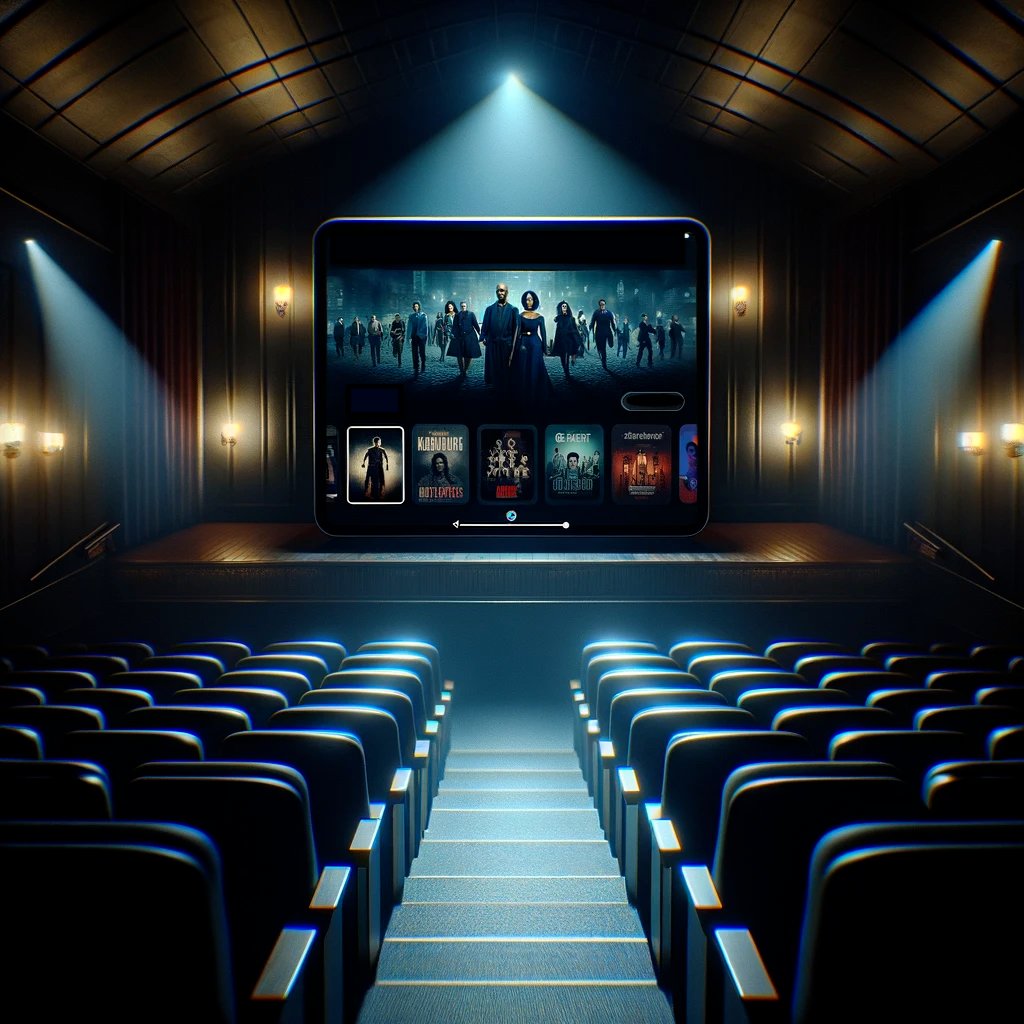Au-delà de Netflix
Penser la diversité des pratiques et plateformes de télévision en ligne
Résumé
Tout comme d’autres médias, la télévision vit d’importantes transformations. L’arrivée d’Internet, de même que les possibilités de numérisation et de stockage ont favorisé la circulation transnationale des contenus et, plus encore, le développement de services de télévision par contournement (TPC) (over-the-top television). Plus communément appelés plateformes de streaming ou services de vidéo à la demande (VàD), les services de TPC offrent un catalogue de productions audiovisuelles pouvant être visionnées en continu sur Internet, sans l’intermédiaire d’une entreprise de distribution et de radiodiffusion (EDR). De ce fait, ils « contournent » les entreprises traditionnellement associées à la télévision, contribuant ainsi à redessiner nos modes d’accès à des contenus audiovisuels.
Références
Académie de la transformation numérique. (2022), Portrait numérique des foyers québécois, enquête NETendances 2021, 12, 4. <https://transformation-numerique.ulaval.ca/wp-content/uploads/2022/09/netendances-2021-portrait-numerique-des-foyers-quebecois.pdf>
Académie de la transformation numérique. (2023), Portrait numérique des foyers québécois, enquête NETendances 2022, 13, 5. <https://transformation-numerique.ulaval.ca/wp-content/uploads/2023/01/netendances-2022-portrait-numerique-des-foyers-quebecois.pdf>
ADALIAN J. (2018), «Almost 500 Scripted Shows Aired in 2018, But We Still Haven’t Hit Peak TV» (13 décembre), Vulture. <https://www.vulture.com/2018/12/peak-tv-scripted-originals-2018.html>
BARKER C. & WIATROWSKI M. (dir.). (2017), The Age of Netflix : critical essays on streaming media, digital delivery and instant access. Jefferson, McFarland & Company, Inc. Publishers.
COUSIN C. (2018), Netflix & Cie : Les coulisses d’une (r)évolution. Paris, Armand Colin.
CHRISTIAN A. J. (2018), Open TV: Innovation Beyond Hollywood and the Rise of Web Television, New York, New York University Press.
CLAUS S. (2017), « Le débat sur la mondialisation culturelle à l’heure du “numérique“ : le cas de Netflix au Canada », COMMposite, 19, 2, p.4-36.
FREY M. (2021), Netflix Recommends: Algorithms, Film Choice, and the History of Taste, Oakland, University of California Press.
GOMEZ-URIBE C.A. & HUNT N. (2015), « The Netflix Recommender System: Algorithms, Business Value, and Innovation », Management Information Systems, 6, 4, p.1-19.
GREENE R. & ROBISON-GREENE R. (dir.). (2015), Orange Is the New Black and Philosophy: Last Exit from Litchfield, Chicago, Open Court.
HACKETT J. E. (dir.). (2015), House of Cards and Philosophy: Underwood’s Republic, Malden/Oxford, Wiley-Blackwell.
HAYES D. & CHMIELESKI D. (2022), Binge Times: Inside Hollywood's Furious Billion-Dollar Battle to Take Down Netflix, New York, William Morrow.
JENNER M. (2014), « Is this TVIV? On Netflix, TVIII and binge-watching », New media and Society, 18, 2, p.257-273.
JENNER M. (2018), Netflix and the Re-Invention of Television, Cham, Palgrave Macmillan.
JENNER M. (2021), Binge-Watching and Contemporary Television Studies, Edinburgh, Edinburgh University Press.
JOHNSON D. (dir.). (2018), From Networks to Netflix: a guide to changing channels, New YorK, Routledge, Taylor & Francis Group.
KALOGEROPOULOS HOUSEHOLDER A. & TRIER-BIENIEK A. (dir.). (2016), Feminist Perspectives on Orange is the New Black: Thirteen Critical Essays, Jefferson, McFarland & Co.
KEATING G. (2012), Netflixed: the epic battle for America’s eyeballs, New York, Portfolio/Penguin.
LOBATO R. (2018), « Rethinking International TV Flows Research in the Age of Netflix » Television & New Media, 19, 3, p.241-256.
LOTZ A. D. (2017), Portals: A Treatise on Internet-Distributed Television, Ann Arbor, University of Michigan Library.
LOTZ A. D. (2022), Netflix and streaming video: the business of subscriber-funded video on demand, Cambridge; Medford, Polity Press.
LOTZ A. D. & LOBATO R. (2023), Streaming Video: Storytelling Across Borders, New York, New York University Press.
LÜDERS M. & SUNDET V. S. (2022), « Conceptualizing the Experiential Affordances of Watching Online TV », Television & New Media, 23, 4, p.335‑351, https://doi.org/10.1177/15274764211010943
MATRIX S. (2014), « The Netflix Effect: Teens, Binge Watching, and On-Demand Digital Media Trends », Jeunesse: Young People, Texts, Cultures, The Centre for Research in Young People's Texts and Cultures, University of Winnipeg, 6, 1, p. 119-138.
MCDONALD K. & SMITH-ROWSEY D. (dir.). (2016), The Netflix Effect: Technology and Entertainment in the 21st Century. Londres, New York, Bloomsbury Academic.
SAULNIER A. (2022), Les barbares numériques: résister à l’invasion des GAFAM, Québec, Les Éditions Écosociété.
SCHNEIDER M. (2023), « Peak TV Tally: 599 Original Scripted Series Aired in 2022 — A New Record, But FX Says We’ve Hit the Limit », (12 janvier), Variety. <https://variety.com/2023/tv/news/peak-tv-tally-599-original-scripted-series-aired-2022-1235487593/ >
SHAW D. & STONE R. (dir.). (2022), Sense8: Transcending Television, New York, Bloomsbury Academic.
TURNER G. (2021), « Television Studies, We Need to Talk about “Binge-Viewing” », Television & New Media, 22, 3, p. 228‑240.
WARHOL R. (2014), « Binge-Watching: How Netflix Original Programs Are Changing Serial Form », Literatur in Wissenschaft und Unterricht, 41, 1-2, p.145-158.
VLASSIS A. (2020), « La pandémie de Covid-19 a renforcé l’hégémonie des plates-formes numériques globales », (6 août), The Conversation. <https://theconversation.com/la-pandemie-de-covid-19-a-renforce-lhegemonie-des-plates-formes-numeriques-globales-142457>
WAYNE M. L. (2018), « Netflix, Amazon, and branded television content in subscription video on-demand portals », Media, Culture & Society, 40, 5, p.725-741.
Téléchargements
Publié
Numéro
Rubrique
Licence
© Stéfany Boisvert, Audrey Bélanger (Auteur-e) 2024

Cette œuvre est sous licence Creative Commons Attribution - Pas d'Utilisation Commerciale - Pas de Modification 4.0 International.




